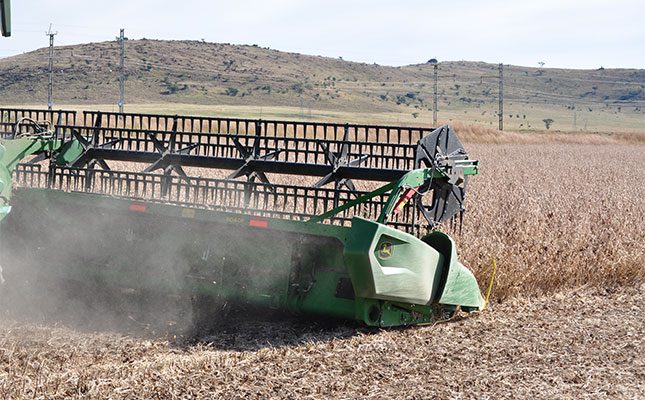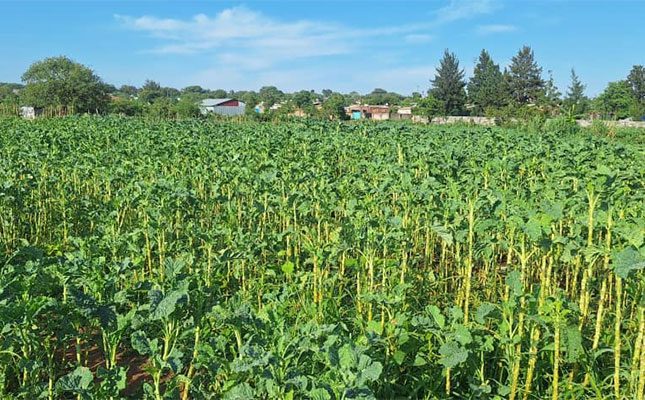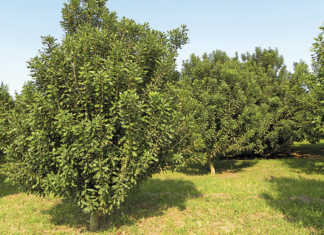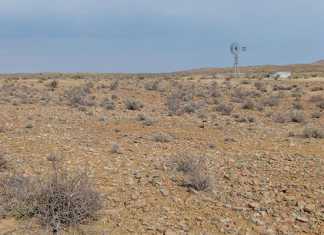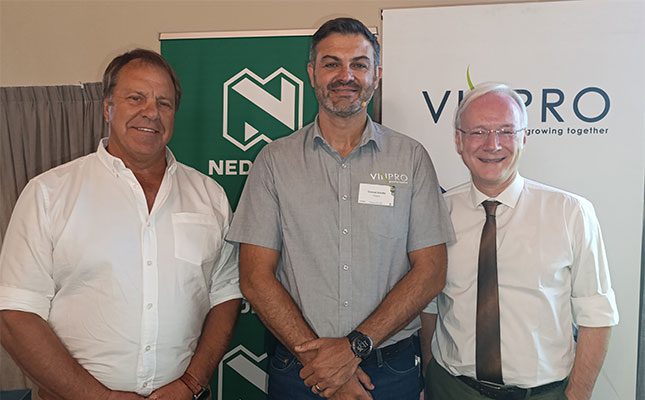
Photo: Glenneis Kriel
The South African wine industry has been facing an increasingly volatile, uncertain, complex and ambiguous world over the past few years, said Anton Smuts, Vinpro chairperson, at the opening of the Vinpro Nedbank Producer Day.
He listed climate change, floods, frost, economic pressure, input inflation, regulatory and policy uncertainty, policy that was unconducive to trade, geopolitical challenges and infrastructure hurdles, such as ports, railways and roads, as some of the biggest challenges.
He added, however, that port efficiencies had improved over the short term, increasing by 39% in December and January.
Citizen action and unfounded statements on the “so-called health risks of any form of wine consumption”, despite the health benefits of moderate consumption having been scientifically proven, were also ongoing challenges for the industry, Smuts said.
Despite these challenges, he said that the wine industry had shown resilience through innovative thinking, continuous evolving training, and the use of new technologies and methodologies.
“Innovation [is] not just about adopting new tools, but fostering a mindset of curiosity and agility. Training, on the other hand, should inspire individuals to think beyond traditional practices, to challenge norms and embrace change as an opportunity,” he said.
He added that the industry needed to inspire excitement, compassion and eagerness in the youth at school level to turn the wine industry into a future career of choice.
The industry also had to collaborate with secondary institutions to ensure that they stayed in touch with the industry’s needs, and to alleviate the risk of organisational chaos that could become a reality in the absence of people and skills to service the industry.
Meanwhile, Conrad Schutte, CEO of Vinpro, said the return on investment for wine grape production up to the farm gate sat at an average of 2,6% in 2024, according to Vinpro’s latest production plan analysis of roughly 270 farms, which represented almost 30% of the industry.
Schutte said that this average was still low, but was a good improvement on the 0,74% of 2023.
“I know things are difficult and we still have hard work ahead of us, but to me this is signalling improvement. Other things that bode well for us include current growing conditions, price movements and our amazing industry, with producers that are receiving increased international recognition.”
In terms of profitability, Schutte said that the number of farmers making a loss declined from 43% in 2023 to 37,9% in 2024, while those breaking even went from 3,2% in 2023 to 2,1% in 2024.
Those making a low profit, ranging from roughly R2 000/ha to R45 007/ha, increased from 46,2% in 2023 to 47,7% in 2024, and those making a profit of more than R45 007/ha increased by 7,7% to 12,4% from 2023 to 2024 respectively.
Schutte highlighted several factors that set top producers apart from less profitable producers.
In terms of pruning methods, for instance, top producers provided training to their workers to understand how and why they were following a specific method. Some also used alternative pruning techniques, such as mechanical and battery pack operated pruners to substantially increase the number of vines pruned per day.
Top producers also used technology to help with site selection and to design and carefully plan new vineyards, as well as precision technology, such as variable rate applications and global positioning systems, to improve their fertiliser and irrigation efficiencies.
They also aligned production practices with their wine-production goals and used new methodologies, such as alternative trellis systems, to improve efficiencies.
Schutte pointed out that a switch from a vertical positioning shoot system to a sprawling system had allowed one producer in the coastal region to reduce his labour costs by 30%, while simultaneously increasing the quality of wine grapes in some sites.
Many top producers were also uprooting non-profitable blocks and replanting vineyards with new clones and material that can achieve their wine-production goals within a short period.
Schutte said that Sauvignon Blanc, Chenin Blanc, and Chardonnay were currently the most planted white grape cultivars, with Cabernet Sauvignon the most planted red grape variety.
Schutte was nevertheless concerned over the current structure of the wine industry, as vineyards were becoming increasingly old.
According to him, roughly 30,4% were older than 20 years, 17,79% were between 16 and 20 years old, 29,7% were between eight and 15 years old, 14% were between four and seven years old, and 8,28% were three years old or younger.
He said that ageing vineyards were less resilient than younger vines, particularly during climate shocks. However, farmers could use new technologies to improve the resilience of these vineyards, he added.




